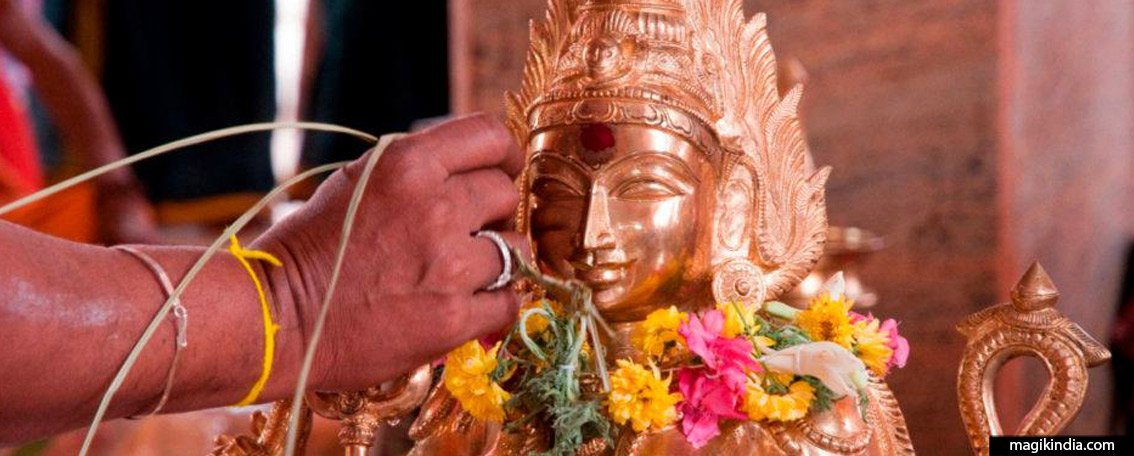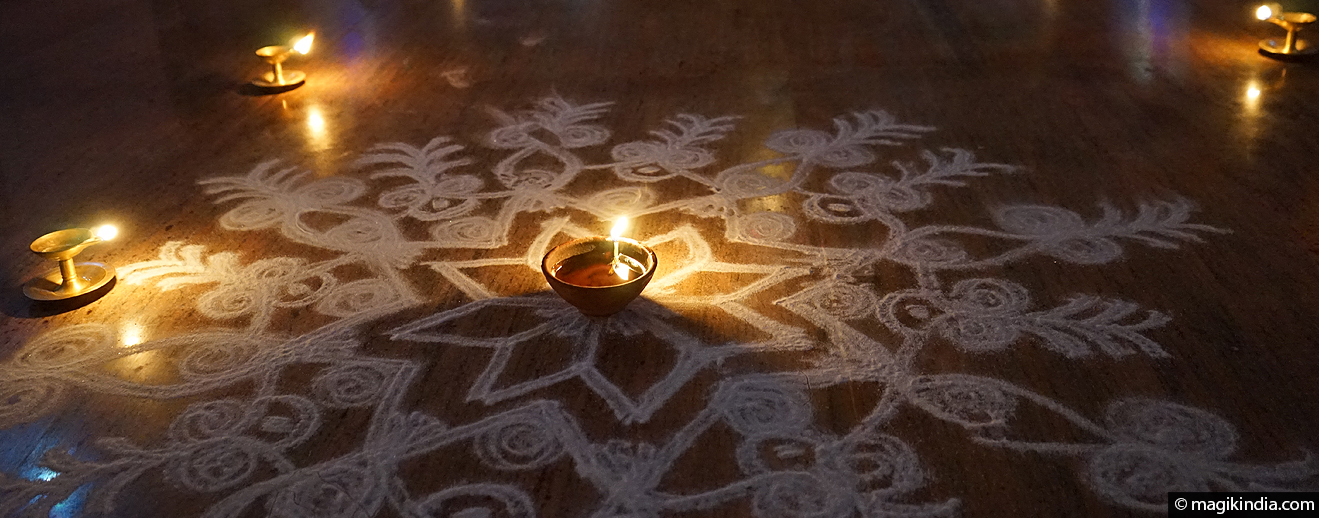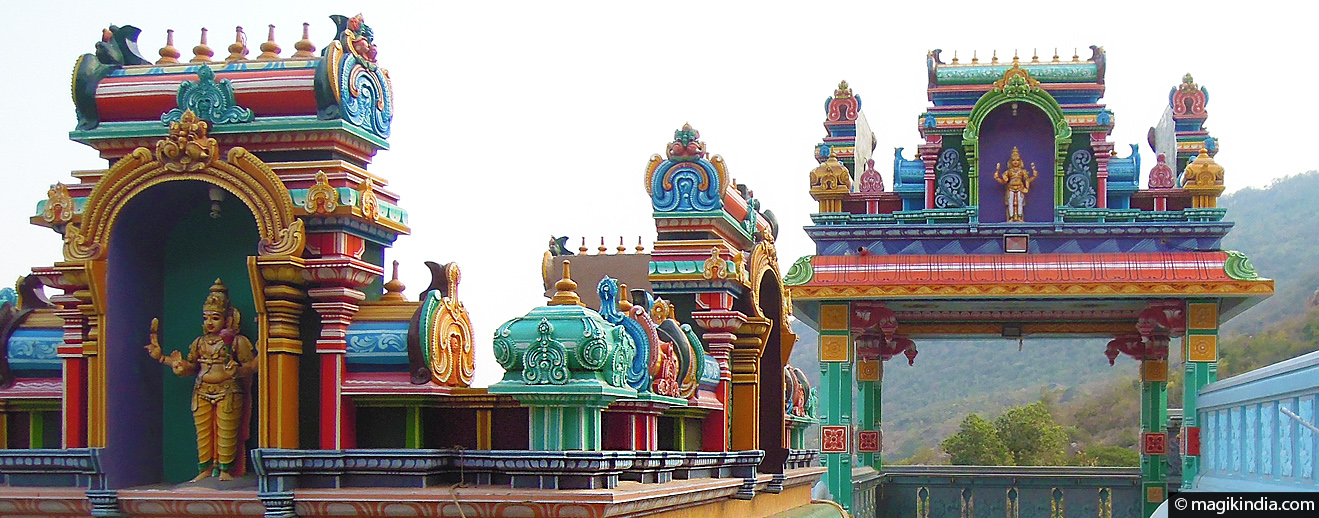
Coimbatore (Kovai), the seventh Arupadai Veedu
Coimbatore (Kovai in Tamul) is the second largest city in Tamil Nadu and a major business centre. It has been called the “Manchester of the South” because of its textiles industry. Its main assets are its position close to Kerala and the hill stations of Nilgiri mountains. Aficionados of Hindu temples won’t be disappointed either.
Marudhamalai Temple (15km)
Marudhamalai is one of the must-go places for visitors to Coimbatore, not only for its temple to the Hindu god Muruga but also for its luxuriant vegetation and sweeping view of the city.

Marudhamalai temple is named after the hill on which it stands: Marudha Malai, which means “hill of vegetation” or “medicine hill”. Many medicinal herbs used in Ayurvedic medicine grow there.
Marudhamalai temple is very important for worshippers of Muruga. In order of importance it ranks just below the Arupadai Veedu, the six most sacred Muruga temples. Some people even say Marudhamalai is the seventh Arupadai Veedu.
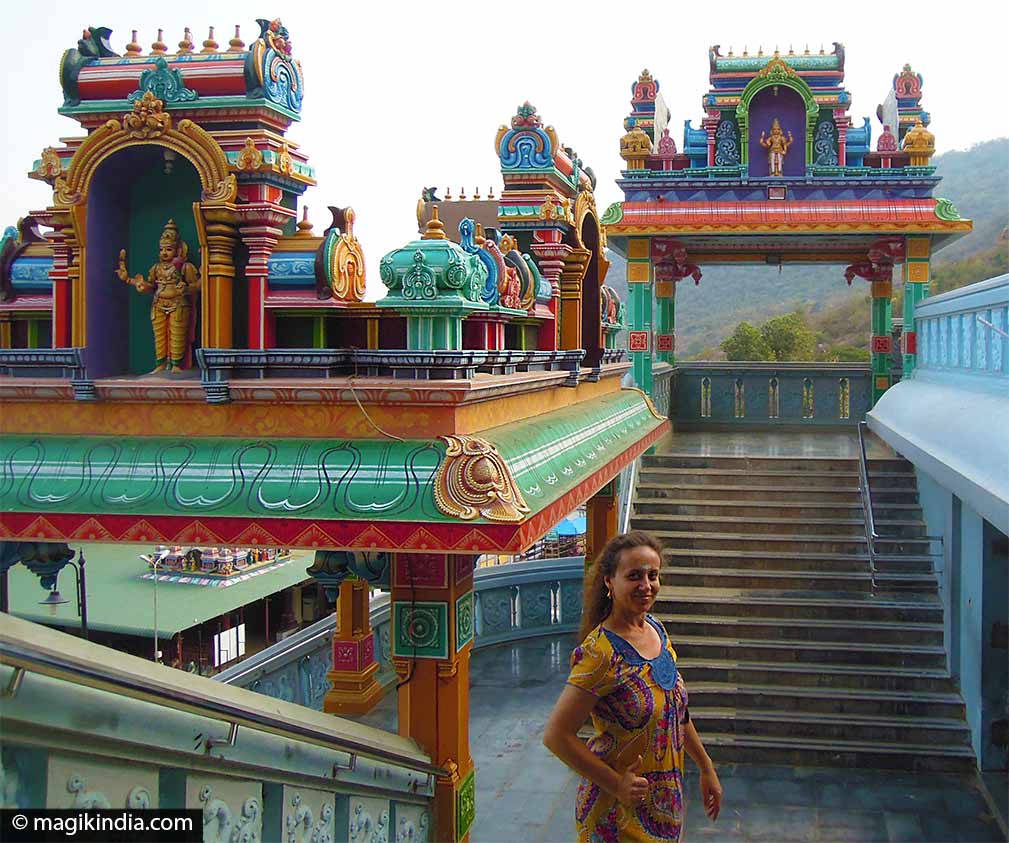
From inscriptions found on the site, the temple is thought to be 1200 years old. It has recently been renovated and new parts added. The idol in the temple represents a particular form of Muruga called Dhandayudhapani. He is said to alleviate physical and mental afflictions.
The temple can be reached in pilgrim mode by climbing the hundreds of steps up the hill, with small temples to stop at along the way – or you can go up by car or bus.
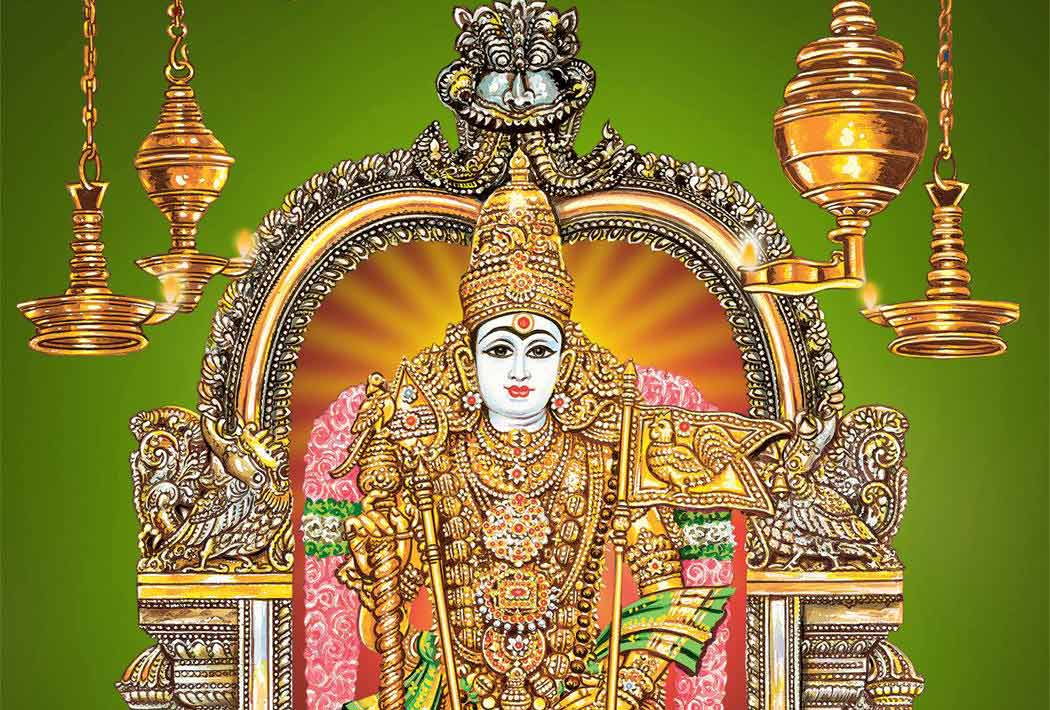
I recommend being there for the “milk abishekam“. This ritual involves pouring litres of milk on the statue to the sound of chants and mantras, in an atmosphere dense with the smoke of sambrani (incense). It is a powerful, entrancing experience.
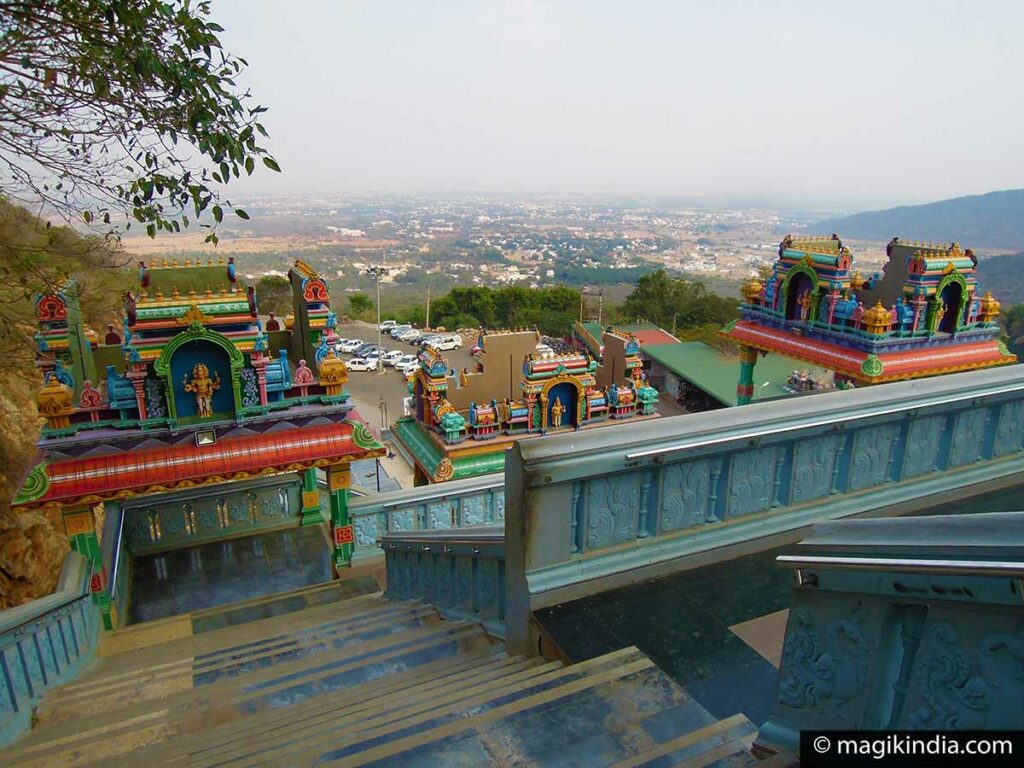
Coimbatore Perur Patteeswarar Temple
Perur Patteeswarar is one of the oldest Hindu temples in Coimbatore. It is more than a thousand years old.
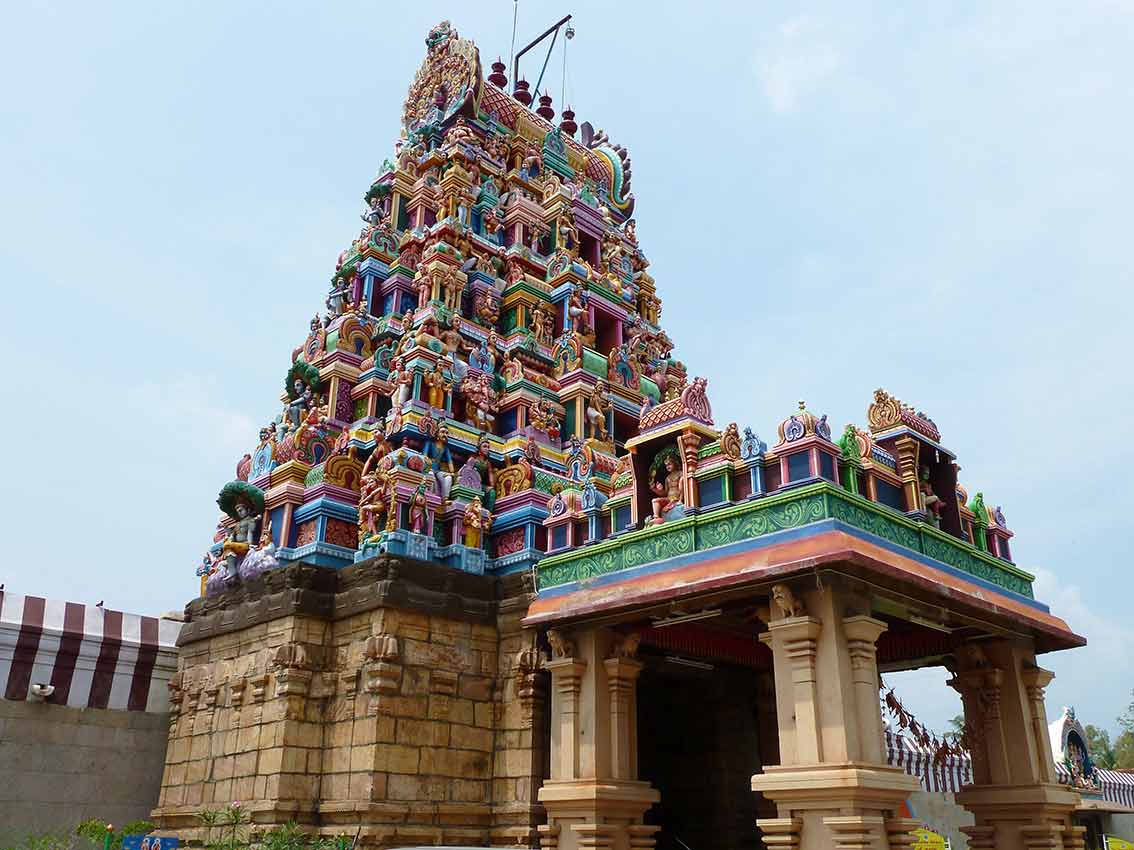
King Karikala Chola is said to have built the first sanctuary here; later, the Kings Hoysala and Vijayanagar both enlarged it. It is dedicated to Shiva under the name of Patteeswarar, represented in the form of a Swayambu Lingam (self-manifested lingam).
Shiva presides with his consort Pachainayaki (Parvati). The temple boasts a unique collection of stone sculptures of deities, protected by rather ugly grilles.
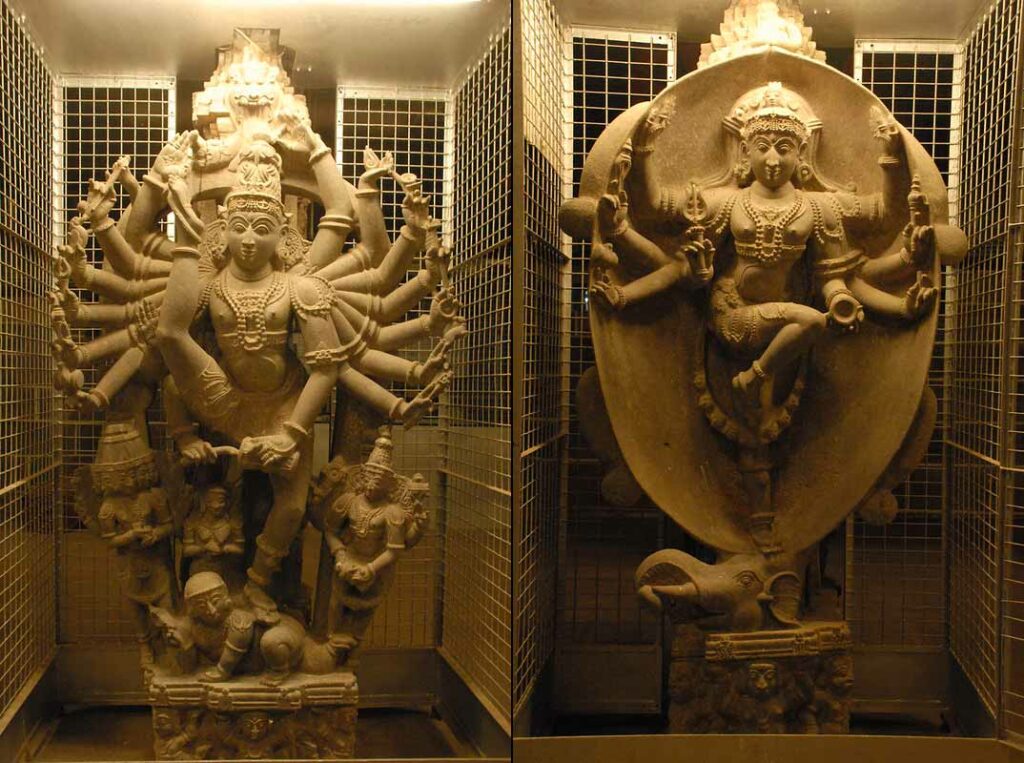
Eachanari Vinayagar Temple (10km)

The main statue in this temple is a black Ganesha almost 2m tall.
It was originally supposed to be installed in Patteswarar temple in Perur, but the axel of the cart taking it from Madurai to Perur broke and the statue stayed here.
Here Ganesha is worshipped as god of all the universe, creator of the Vedas and flame of wisdom.
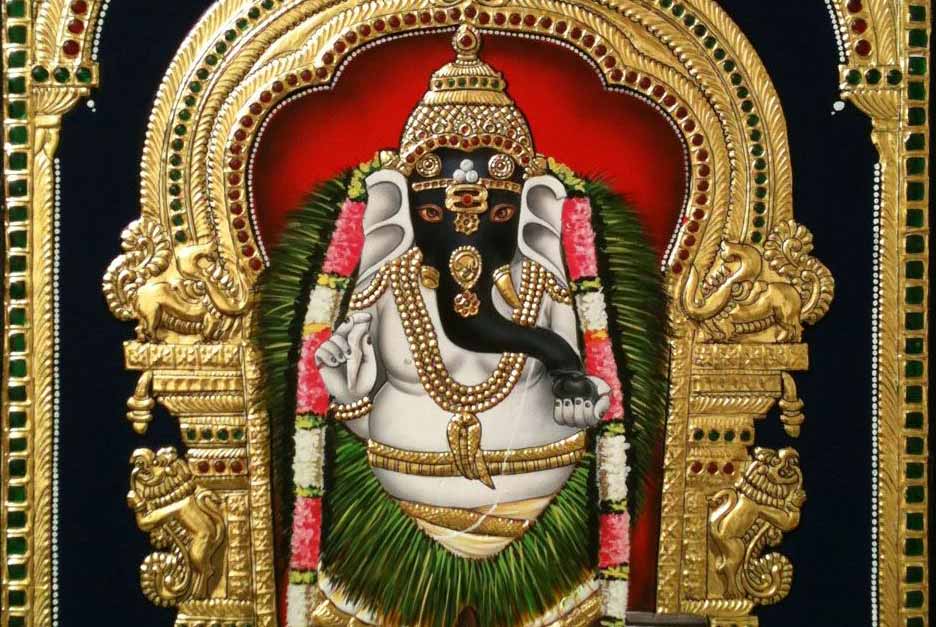
Thirumoorthy Hills (85km from Coimbatore)

The Thirumoorthy hills are a great place to stop on the way between Palani and Coimbatore. But it’s best to visit when there is water – after the monsoon, in other words.
Thirumoorthy dam

Thirumoorthy dham is located at the foot of the Thirumoorthy hills. There is nothing special about the dam itself, but the landscape is beautiful and you can hire a boat to go out on the lake.
Arulmigu Amanalingeswara Temple
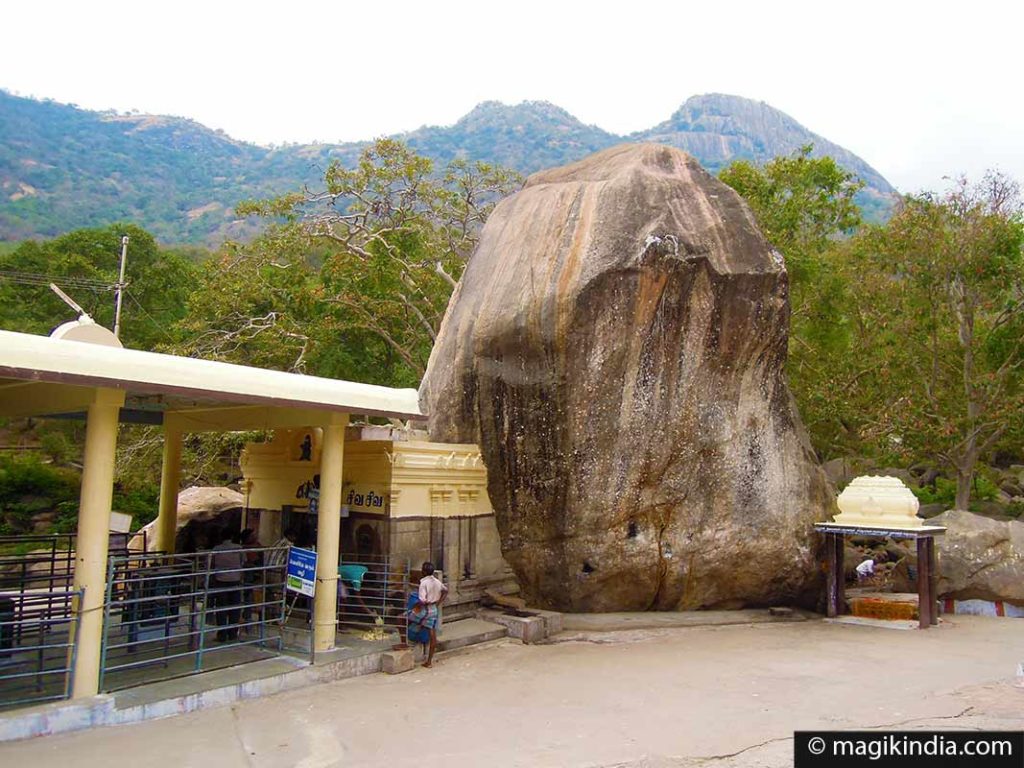
Arulmigu Amanalingeswara Temple commonly called Thirumoorthy Temple, it stands at the foot of Thirumoorthy next to the dam of that name. It has been excavated from the rock and has idols of the Trimurti (Brahma, Vishnu and Shiva) in the same sanctuary. A stream flows close by.
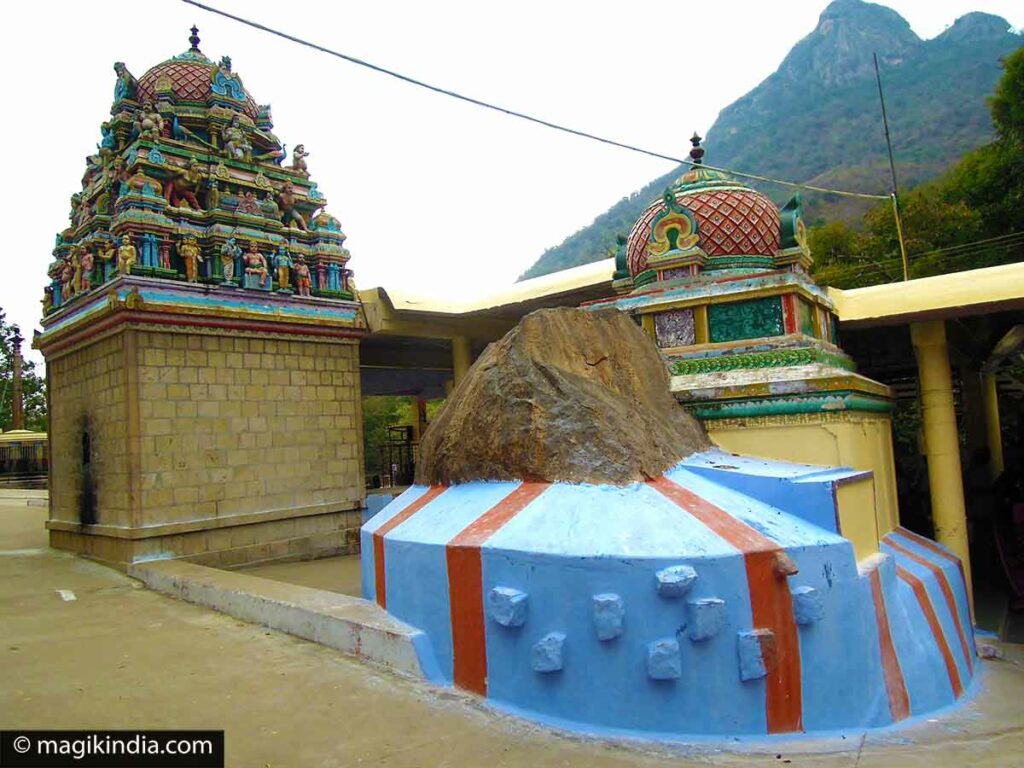
Panchalingam falls

A path to the left of the temple takes you on a pleasant walk along the river for 2km, arriving at the Panchalingam falls. Your efforts are amply rewarded by a cool bath – especially appreciated in summer.
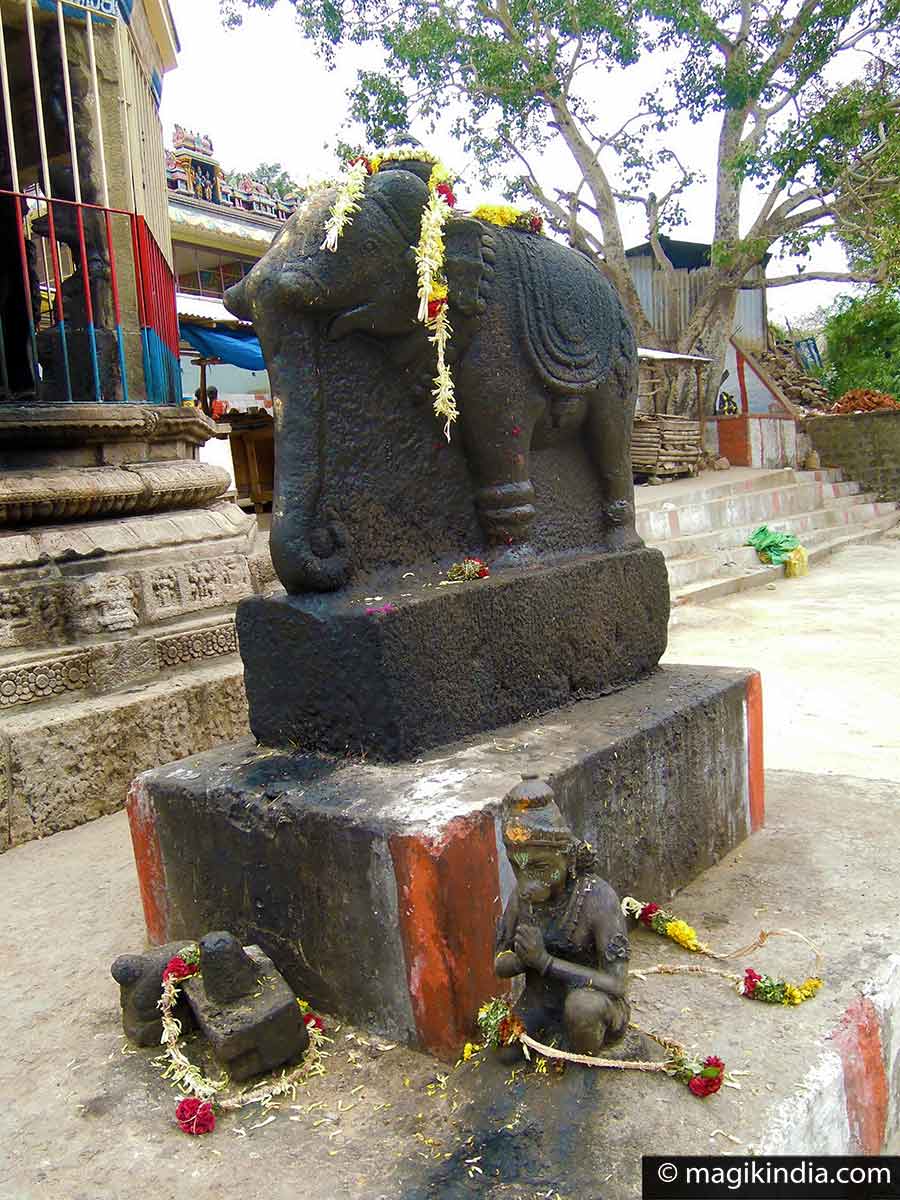
Originally there were five lingams (emblems of Shiva) here, but some have been carried away by the river after heavy rains. At religious festivals pilgrims take water from the falls to use in their rituals and prayers.
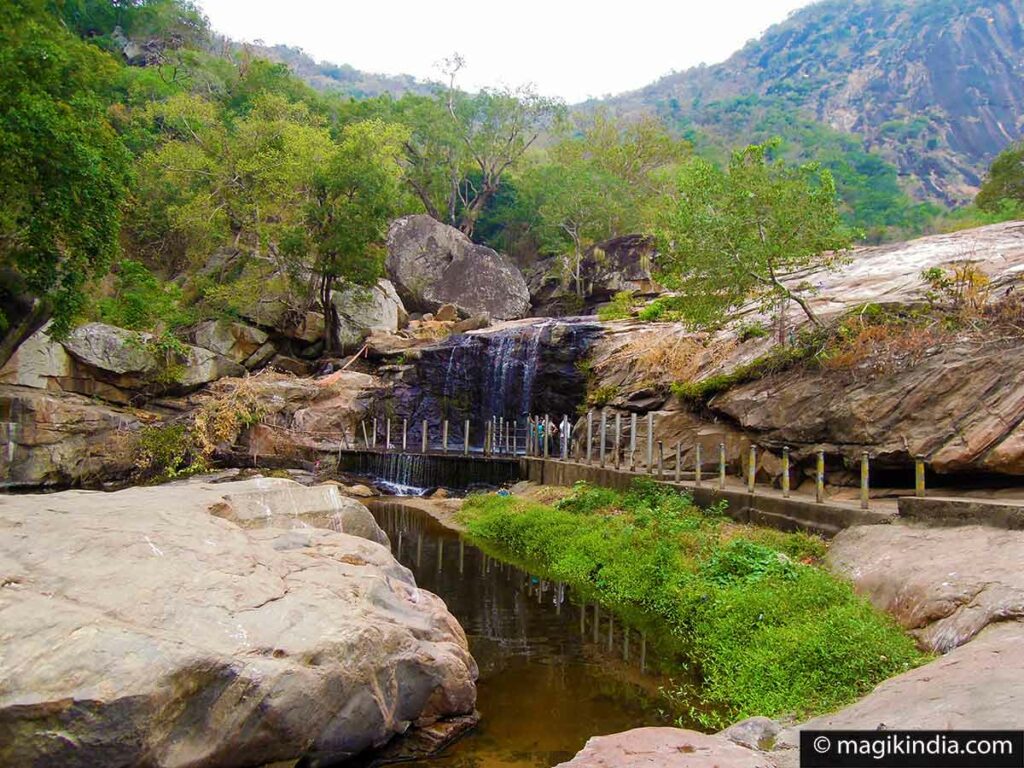
Ooty – Nilgiris Hills (85km)
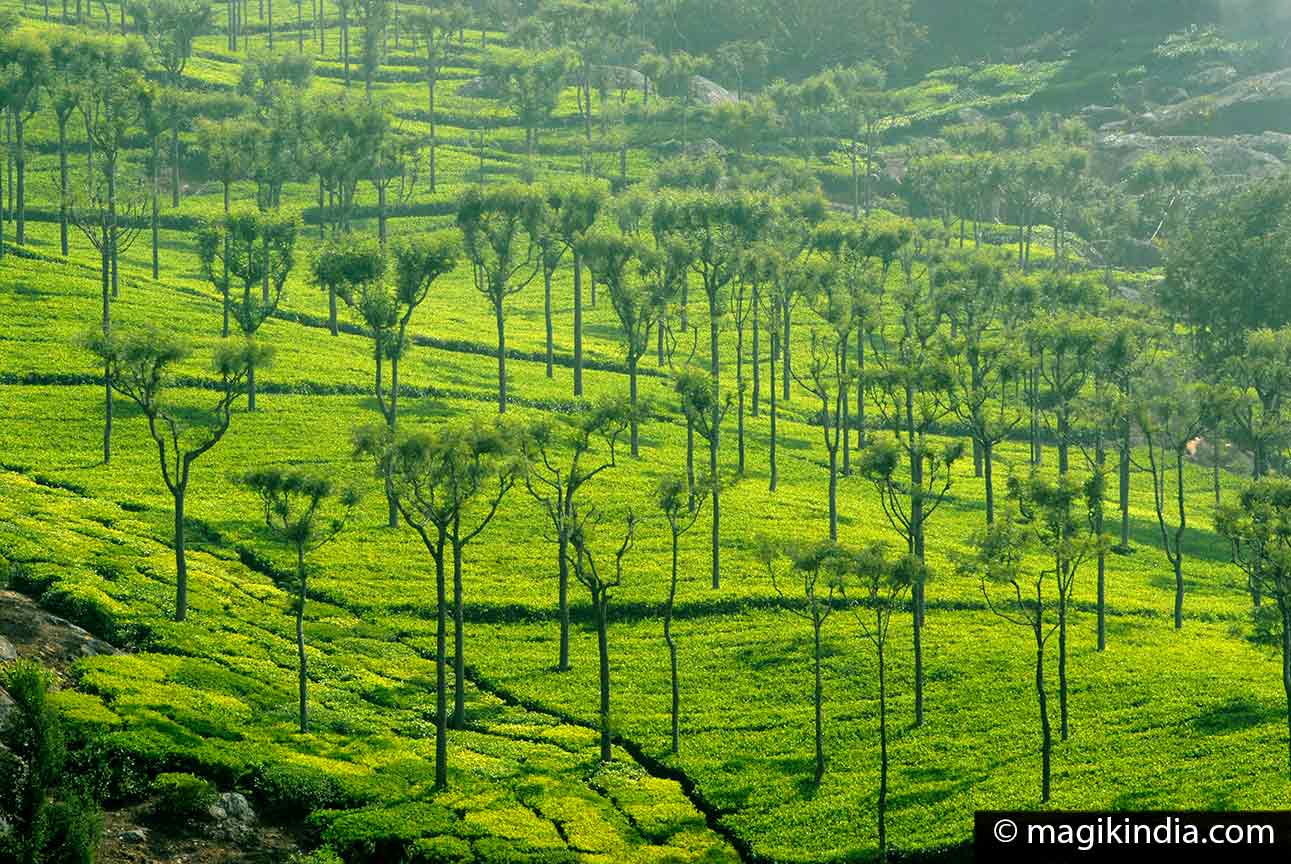
Udhagamandalam, 80km north of Coimbatore, is better known by its English abbreviation: Ooty. It is a hill station 2500m above sea level. Its cool climate, famous tea gardens and dense forests fragrant with eucalyptus make it one of the most popular hill stations in the Nilgiri mountains…
KNOW MORE ABOUT ITPalani hill (110km)
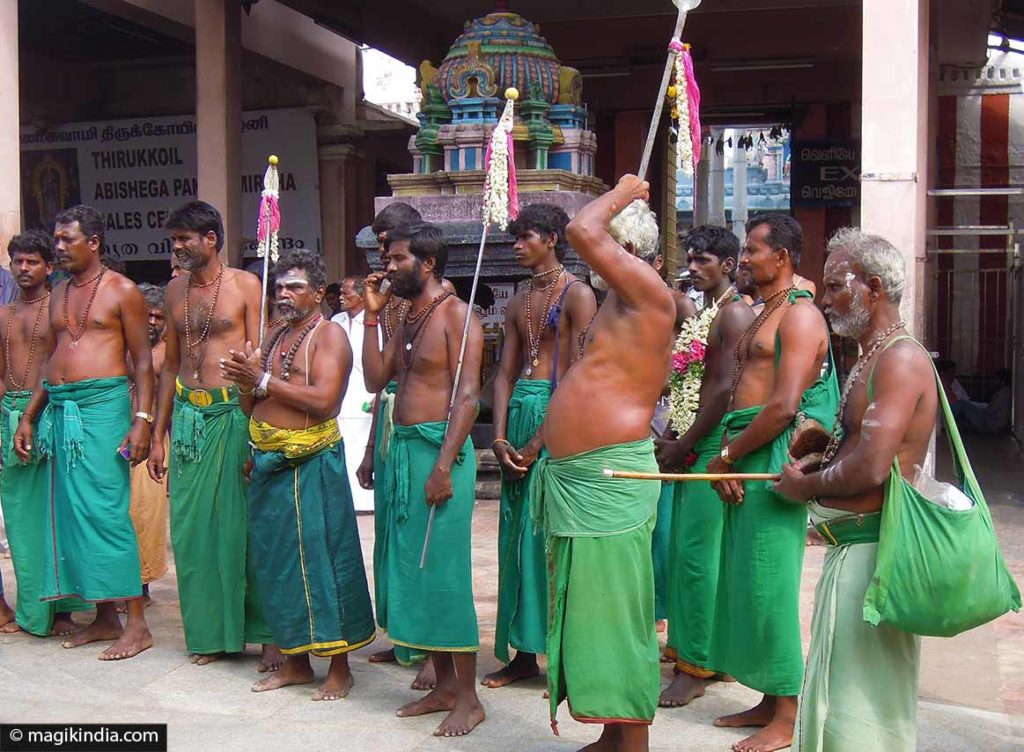
Palani temple is one of the most important temples to the Hindu god Muruga or Kartik, being the third of his Six Holy Abodes (aarupadai veedu)…





